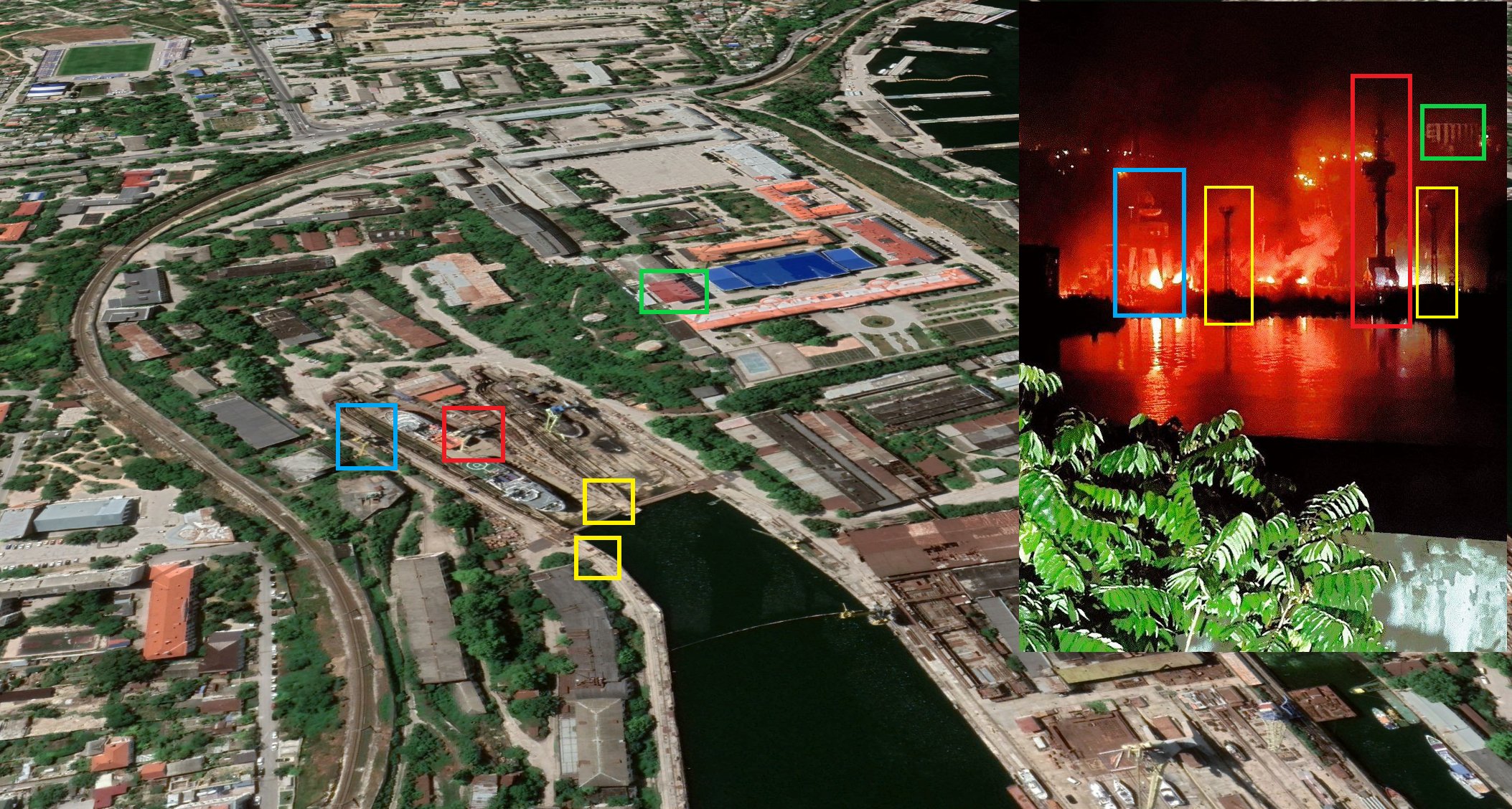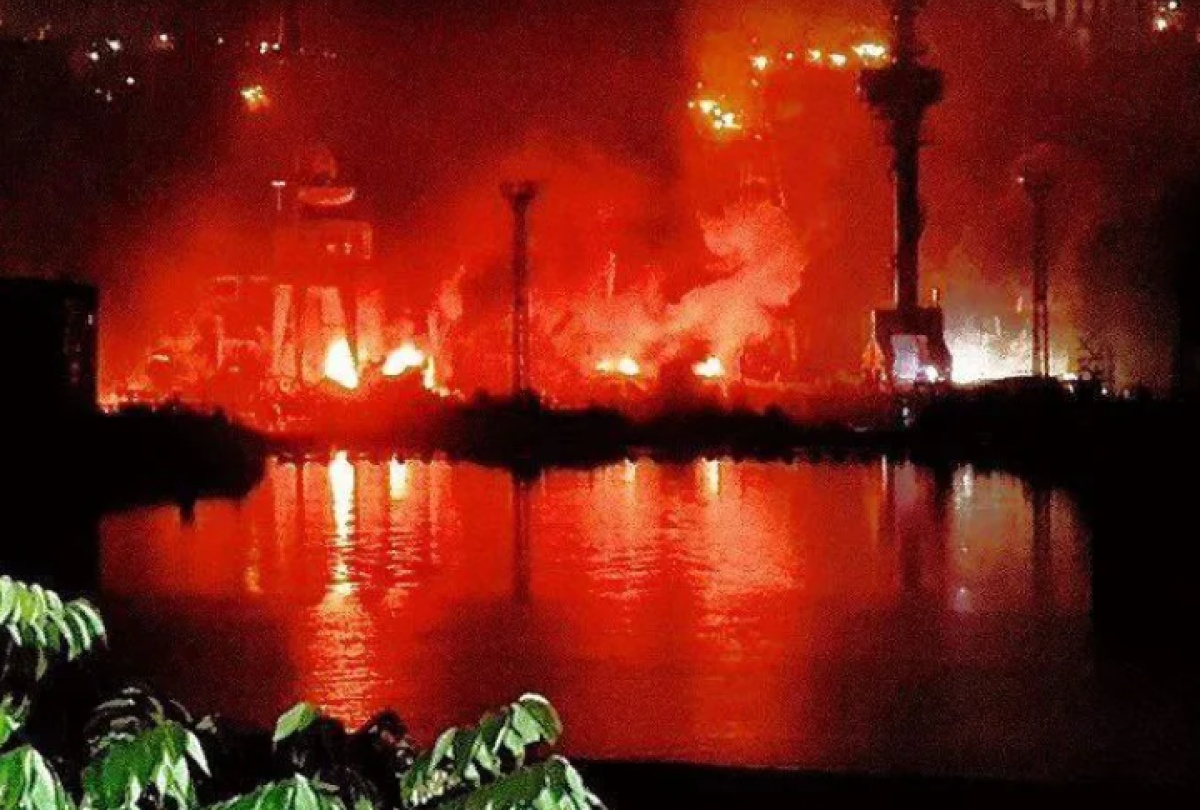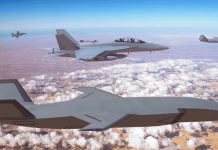Ukraine seems to have struck a big blow to Russian forces by striking a dry dock in Sevastopol. The dry dock cradled two warships – a Ropucha-class amphibious vessel and a Kilo-class submarine.
Telegram and X (formerly known as Twitter) have been abuzz with the Russian Navy losing the Kilo-class submarine.
Making Crimea ‘Un-Defendable’ For Russia, Larger US Strategy Reflects In Ukrainian Attack On Sevastopol
As the first reports are coming in, it is unclear how Ukrainian forces attacked the Russian naval base on Sevastopol in Crimea, 150 miles south of the Ukraine front line. Rumors are rife that Ukrainians sneaked in some of their explosives-laden drone vessels in the heavily defended port, or it could be a missile that did the job. The role of saboteurs has also not been ruled out.
But the explosions rocking the dry dock and ensuing fires have been bright as day. If the Russians are unsuccessful in putting out the fires, they can lose the two boats. The two boats are part of the Black Sea Fleet of Russia, comprising 30 warships. These two ships are unlikely to be replaced with the Ukraine war raging on.
The Russian Defense Ministry has confirmed that the Sevastopol Shipyard on the Crimean Peninsula was on fire early on Wednesday. Two ships were damaged after Ukraine launched ten missiles and three speedboat attacks on the port.
Seven missiles were downed by Russia’s air defense systems, and all three boats were destroyed by a patrol ship, the ministry said in a statement on the Telegram messaging app. “As a result of being hit by enemy cruise missiles, two ships under repair were damaged,” the ministry said.

The strategic shipyard on the peninsula, which Russia annexed from Ukraine in 2014, builds and repairs ships and submarines of the Russian Black Sea Fleet.
Mikhail Razvozhayev, the Moscow-installed governor of Sevastopol, the largest city in Crimea and a major Black Sea port, said on Telegram that at least 24 people were injured.
While the Ukraine-Russia war is mainly fought on land and in the air, the Black Sea Fleet has borne a big brunt of the conflict. Earlier, a drone, under the cover of dark, had hit its landing ship Olenegorsky Gornyak in Novorossiysk, a port in southern Russia just 70 miles east of Russian-occupied Crimea.
The 370-foot Ropucha-class landing ship was one of eleven that sailed with the Russian Black Sea Fleet on the first day of the Russian-Ukraine war and survived a direct hit from the Ukrainian Navy’s 16-foot drone boats.
Before this attack, the total number of the Black Sea Fleet warships that Ukraine has been successful in putting out of action was four. The losses include the landing ship Saratov, blasted by a ballistic missile in March 2022; the cruiser Moskva, holed by an anti-ship missile the following month; the rescue ship Vasily Bekh, another victim of an anti-ship missile; and then Olenegorsky Gornyak.
Besides this, the Ukrainians have also sunk or badly damaged several Russian patrol boats and landing craft.
The latest attack has earned accolades for the Ukrainian Navy, which, with only one warship, has primarily been called a shipless Navy. The sole warship in its fleet is an aging landing ship. What the Ukrainian Navy has been lacking in terms of large hulls and ships, it has been making up in terms of stealth and tactics.
Armed with home-grown Neptune anti-ship missiles, Western-made Harpoon Anti Ship missiles, and its kamikaze drone boats, Ukraine has managed to severely constrain the movement of the Russian Black Sea Fleet.
The Russian warships seldom leave port, and even if they do, it is only for a short while to launch missile attacks on Ukrainian cities.
The Kremlin last month canceled the 11-month-old Black Sea Grain Initiative, which had allowed commercial vessels to ship grain from Ukrainian ports. The Russians subsequently signaled they might blockade grain shipments; they even sailed the corvette Sergey Kotov toward the western Black Sea.

Keeping Its Black Sea Fleet Safe
The quest for warm water ports triggered the Russian annexation of Crimea in 2014, But to keep it operational and its Black Sea Fleet safe is a different ball game altogether.
In the face of the threat of Ukrainian drones hitting the Sevastopol harbor base, the Russian Navy has pulled back its warships and is making the base impregnable.
Guarding its naval assets are its missile systems, maritime drones, and its trained marine mammals – its military dolphins trained to counter Ukrainian special forces divers seeking to infiltrate the base and sabotage Russian naval warships docked there.

The Sevastopol port is an important target for the Ukrainians as Russia launches most of its Kalibr cruise missiles from the Black Sea waters off the Crimean Peninsula. Also, the port is the Russian Navy’s gateway to the Black Sea and the Mediterranean Sea.
A Planet Labs image dated November 9, 2022, shows the Projects 1239 and 1241 warships that launched the cruise missiles docked near Holland Bay. These ships go out for a short distance in the Black Sea and launch their missiles from there. This is done so the missiles hit one of Sevastopol’s Mountain slopes.
The missiles from the warship have been constantly targeting population centers in Ukraine. Last year, on December 5, Ukrainian President Volodymyr Zelensky vowed that his troops would ensure those missiles “can only be at the bottom” of the sea.
- Ritu Sharma has been a journalist for over a decade, writing on defense, foreign affairs, and nuclear technology.
- She can be reached at ritu.sharma (at) mail.com




